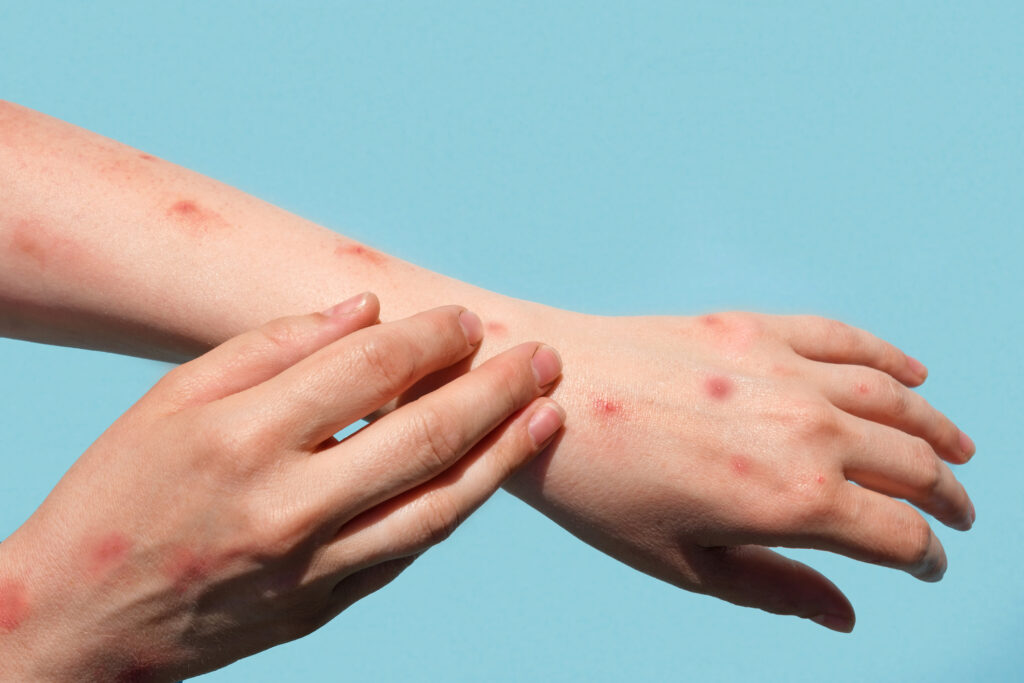Cases of monkeypox have risen considerably over the last few weeks, prompting the Department of Health and Human Services (HHS) to declare it a public health emergency. In response, new monkeypox nurse triage protocols are now available from triage protocol authors, Dr. Schmitt and Dr. Thompson, to evaluate virus symptoms for patient callers. Read on to learn about this update, and how you can incorporate these protocols into your own telehealth and telephone nurse triage to help concerned patients.
What Is Monkeypox?
According to the CDC, “[m]onkeypox is a rare disease caused by infection with the monkeypox virus,” with symptoms that are similar to smallpox, but milder and rarely fatal. While public health officials have stated that “[m]onkeypox has been spreading primarily through skin-to-skin contact during sex among gay and bisexual men,” they’ve also clarified “that anyone can catch the disease through physical contact with someone who has it or contaminated materials such as bedsheets and towels.”
Research is still ongoing to identify all of the potential vectors through which the virus can spread. While a monkeypox vaccine does exist, demand for it has currently outpaced supply.
What Are the Symptoms of Monkeypox?
The CDC provides the most comprehensive list of potential symptoms for monkeypox, starting with a rash that resembles pimples or blisters and progresses through “several stages, including scabs, before healing.” This rash may be accompanied by fever, chills, or swollen lymph nodes, among other side effects. In some cases, those who contract the virus may experience flu-like symptoms before the onset of a rash.
A typical infection lasts two to four weeks, and transmission can occur from the time that symptoms first appear until the tell-tale rash has healed — i.e., it has scabbed over, those scabs have fallen off, and a new layer of skin has replaced it.
What Monkeypox Nurse Triage Protocols Are Available?
Schmitt-Thompson protocols, the gold standard when it comes to telehealth and telephone nurse triage, have been updated with two (2) new adult protocols for addressing potential monkeypox cases. They include “Diagnosed or Suspected” and “Exposure,” along with guidance on what type of medical provider the patient should see for treatment.
Protocol updates like these are common during public health emergencies, like the initial spread of COVID-19 back in 2020, and each dominant variant since. As new information becomes available regarding a protocol’s illness, these updates are submitted to a board of medical professionals for review and approval before being shared with providers.
Triage protocols already come in two versions: daytime and after-hours. These new monkeypox nurse triage protocols for adults have been added to both versions. Like all protocols, these are designed to evaluate the severity of a patient’s symptoms in order to determine whether that patient should seek medical care from their provider or at an emergency room, or whether they can treat their symptoms at home.
Do You Use Nurse Triage Protocols?
Does your practice already use Schmitt-Thompson protocols? If it doesn’t, have you considered implementing them? In either case, we can provide you with updated versions that include new monkeypox nurse triage protocols at your request.
We also offer the most intuitive nurse triage software on the market to document all patient interactions with your telehealth or telephone triage nurses, improve response times, and enhance continuity of care.
And, if your practice needs additional nurse triage support — either during normal business hours or anytime after — we also have a call center of registered nurses who can answer patient phone calls 24/7 as an extension of your office.
Contact us today to talk about which nurse triage services would benefit your practice.
About TriageLogic
TriageLogic is a URAC-accredited, physician-led provider of top-quality nurse telehealth technology, remote patient monitoring, and medical call center solutions. Founded in 2007, the TriageLogic Group now serves more than 9,000 physicians and covers over 25 million lives nationwide.





